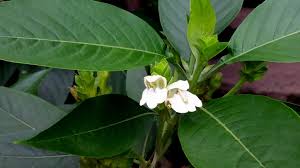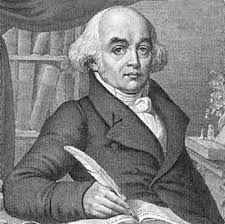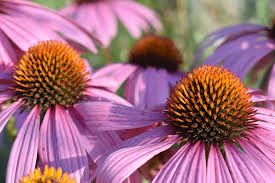By Sarat Chandra Ghose, M.D., Bhowanipore, Calcutta, India.
Corresponding Member of the British Homoeopathic Medical Society, French Homoeo, Medical Society and Hahnemann Institute of Brazil; editor of the “Indian Homoeopathic Reporter.”
Name. – In Sanskrit it is called Vaidyamata, Singhee, Vasika, Aturoosha, etc.; in hindi and Bengali, Bakus or Basuk; in Tamil, Adharorah.

Description of the plant.
This is a small tree or large shrub found in India. It flowers in the cold season. Its leaves are broad-lanceolar. The spikes are found to be short, long-peduncled and the corolla ringent, upper lip vaulted, and emarginate. The trunk is straight, and the bark is somewhat smooth and ash-colored. The branches are sub-erect, with bark resembling that of the trunk, but smoother. The leaves are opposite, short-petioled, broad-lanceolar, long, taper-pointed, smooth on both sides, about five or six inches long, and one and a half broad. The spikes from the exterior axills, solitary, long-peduncled, the whole end of the branchlet forming a leafy paicle, flower-bearing point short, and enveloped with large bracts. The flowers are opposite, large with small ferruginous dots; the lower part of both lips is streaked with purple. The bracts are three-fold, opposite, one flowered. Exterior one of the three, large, ovate, obscurely five-nerved. Interior pair, much smaller, ends sub-lanceolate; all are permanent. Calyx five parted to the base; divisions nearly equal. Corolla ringent. Tube short; throat ample; upper lip vaulted, emarginate; lower lip broad and deeply three-parted; both streaked with purple. Filaments long, resting under the vault of the upper lip. Anthers twin.
PARTS EMPLOYED – Fresh leaves.
LEADING USES – The Ayurvedic Physicians of India prize it very much. They are so very sure of its efficacy that they call it Baidyamata, i.e., mother of physicians.
They confidently proclaim that no death can occur from cough of any kind if Vasaka can play its role and find time to display its healing virtues.
It is cooling, destroyer of hoarseness and a sure and strong arrester of blood. It is highly efficacious in cold, coryza, cough, bronchitis, pneumonia, phthisis, spitting of blood, fever jaundice, vomiting, thirst, loss of appetite, and constipation.
Proving No. 1.
NAME OF THE PROVER. – Bama Charan Roy, aged 32. On may 10, 1903, at 8 A.M., I gave him three (3) drops of the tincture of Justicia adhatoda. He took Justicia in three-drop doses five times that day. No symptom of poisoning was marked that day.
May 11. He commenced to take Justicia in three-drop doses from 8 A.M. of this day also.
He had an attack of a mild catarrh at 4 P.M. this day; there was tickling sensation at the root of the nose.
No more doses of Justicia were given this day.
May 12. At 8 A.M. A dose of three drops of the tincture was given.
At 10 A.M. Another dose was given.
The catarrh became very fluent and profuse this time; there was also sneezing present.
At 4 P.M. Another dose was given.
No new symptom was marked.
At 10 P.M. Another dose was administered.
No more doses were given this night.
May 13. AT 8 A.M. A dose of three drops was given.
At 10 A.M. Another dose was taken.
At 11 A.M. There was a perceptible aggravation of the symptoms.
At 1 P.M. The following violent symptoms were marked by me personally:
Mind. – He grew anxious and discouraged; he felt a decided aversion to conversation and was inclined to be angry.
Head. – The head appeared to be full and heavy with pressure towards the forehead; he experienced heat of the head; there was pulsation in both sides of the forehead.
Eyes – There was watering from the eyes; burning pain in the eyes existed; eye seemed to be confused, and swimming in tears.
Ears. – All noise was unbearable to the ears.
Nose. – There was fluent and profuse coryza from the nose, with constant sneezing; there was swelling of the nose, with painful sensibility to touch and obstruction of the nose; the fluent coryza was accompanied by shooting and aching in the forehead; the nostrils were ulcerated; there was loss of smell and of taste; there were sometimes dryness of the nose and when this dryness was experienced obstruction of the nose was the result.
Face – The face was red and burning, and was hot. There were gnawing pains in the face, mitigated by external pressure.
Teeth – There were shooting pains in the teeth which extended to the cheek.
Mouth – There was dryness of the mouth with thirst; the mouth, throat and tongue were all dry; thee tongue was enveloped with a white coating.
Throat – There was a sensation of dryness in the throat; there was pain, as of excoriation in the throat, during empty deglutition; there was tenacious mucus in the throat, which could not be detached without repeated coughing.
Appetite – There was total loss of appetite; the taste was insipid and putrid; there were repugnance and is gust for food.
Nausea and Vomiting – There was nausea; vomiting took place while coughing; there was vomiting of mucus; there were exhaustion and paleness of face after vomiting.
Abdomen – Pains were felt in the hepatic region, mostly shooting and gnawing pains; there was abundant production of flatus, with gurgling; there was sometimes escape of flatus.
Stool – There were loose evacuations, mixed with mucus and slight colic, ameliorated after stool.
Respiratory Organs – There was hoarseness, cough and rattling in the chest; there was painful tenderness of the larynx when touched; there were frequent fits of coughing, associated with suffocative obstruction of respiration; sometimes vomiting took place while coughing; the cough was accompanied by sneezing, stitches in the chest and red face; there were some paroxysms of cough, with expectoration of bloody, slimy matter, or of tough, yellowish mucus; there was a marked aggravation of these coughing fits at night.
Generalities – There was a marked over-sensitiveness to external impressions.
Fever – The pulse became quick and hard; the temperature of the body was found to be 102.2; he felt chilly every now and then.
Proving No. 2
PROVER – Durga pado Mokhrjee, a Homoeopathc Practitioner.
AGE – He was 27 years of age.
On the 12th of June, 1903, he took three drops of the tincture of Justicia at 10 A.M. Another dose was taken by him at 1 P.M. The third dose was administered to him at 4 P.M., and the fourth dose at 8 P.M. He did not feel any discomfort that day.
June 13, 10 A.M. He took three drops of the tincture.
At 1 P.M. He took another dose.
At 4 P.M. He took three drops.
At 8 P.M. He took another dose.
At 10 P.M. He experienced a tickling sensation in the nostrils; there was also burning sensation in the nostrils.
At 10:30 P.M. Premonitory indications of coryza were marked.
At 11 P.M. The catarrh grew very profuse and fluent; there was also sneezing present; there was watering from the eyes.
At 5 A.M. Another dose was taken.
June 14, at 7 A.M. the head seemed to be heavy; there were burning pains in the eyes; there was fluent coryza which streamed down the cheek, accompanied by violent, almost constant sneezing; there was total loss of smell and appetite; there was dryness of the mouth, with thirst; there was white coating on the tongue there were hoarseness and cough, with rattling in the chest; frequent paroxysms of cough came on, with sneezing and obstruction of the nose; there was cough, with expectoration of tough, yellowish mucus which could be expelled after repeated hawking; the pulse became quick and full; he felt chilly and feverish, but there was no rushing of the temperature. I had a mind to give two or three doses more; but he was very unwilling to take any more. I believe that the rest of the symptoms marked in the first proving would have surely appeared if he could have taken a few more doses of Justicia.
These two proving will, however suffice to demonstrate that Justicia will turn out a grand homoeopathic remedy in coryza, cough, bronchitis, etc.
Clinical Verification
CASE No. 1 – WHOOPING COUGH
A grandson of Dr. Nundo Lal Ghose, of Tallygunze, aged two years, was suffering from whooping cough. Whooping cough was, at that time, raging epidemically in that locality. Two deaths occurred in the family a few days before. I was called in to see the patient on Sept. 10th, 1903. The boy had been under the treatment of a homoeopathic practitioner of the locality.
I marked the following symptoms when the boy was placed under my treatment:
The boy coughed immediately after eating and drinking, and vomited what he had eaten; convulsions appeared during the course of cough, spasms of fleors predominated; the paroxysms of cough went on without any interruption for a long time and which lingered till the breath was nearly exhausted; the body became stiff and rigid; there was rattling of mucus in the chest; the cough became sometimes dry and sometimes moist; any change of air produced the fits of coughing; the fits were marked to appear every thirty or forty minutes; there was no appetite; tough, ropy mucus came on with the vomiting; there was obstinate constipation and the bowels did not move for the last five days.
I heard that the physician in attendance had given him Cuprum, Corallium rubr., Drosera, Bryonia; but nothing had been found efficacious.
I prescribed my new remedy, justicia adhatoda, IX every hour. September 2. I went to see him at 10 A.M. I heard that the boy was somewhat better than before. He passed almost a quiet night. There was only one fit of coughing last night, which lasted for only ten minutes; but there was no convulsion; I also heard that there was a motion in the morning at 8 A.M., which consisted of hard, dry balls mixed with ropy mucus. I gave the patient one ounce of barley-water in my presence, but he did not throw it off.
I prescribed Justicia adhatoda 3x to be given every two hours. September 12. I saw the boy at about 2 A.M. The bowels were moved regularly; there was no rattling of mucus in the chest; there was no coughing-fit last night; the patient had appetite now; the boy appeared to be cheerful.
I prescribed Justicia 3x every four hours. The boy took this medicine for four days more and regained his former vigor and strength within a week.
CASE No. – 2 WHOOPING COUGH
The youngest son of Babu Annada Prasad Kundu, of Bhowanipore, aged three years, had been suffering from a severe attack of whooping cough for the last twelve days.
He was placed under my treatment on August 10th, 1903, when I marked the following symptoms:
The whooping-cough returned periodically in spasms which lasted for a long time and produced extreme exhaustion; the boy held each hypochondrium during cough; there was yellow expectoration which the boy had to swallow; the cough induced the vomiting of food and the boy threw off everything as soon as it was taken; the patient was very restless and totally sleepless; there were sometimes paroxysms of severe spasmodic cough which continued with uninterrupted crowing inspirations till the boy grew purple and blue in face and was quite exhausted; the patient was worse in the latter part of night; the bowels had not moved in the last two days.
I at first prescribed Drosera 6x, and afterwards Corallium rub. 30; but none of them could do any good. I then gave him Justicia adhatoda ɵ one drop every three hours.
August 2. I saw the patient at about 9 A.M., when I was astonished at hearing that a violent aggravation had taken place as soon as the third dose of my remedy was administered. I thought that this aggravation was due to the strength of the dose and so I gave him Justicia in IX potency and ordered that one dose of it should be given after each fit of coughing.
August 12. I went to see the boy at 8 A.M. I was very glad to hear that the boy was somewhat better than before; the bowels moved this morning; the boy slept for nearly five hours last night; there was only one fit of coughing during last night; the boy vomited up to 2 P.M. last night, but since then no vomiting took place although the patient had barley-water for four times.
This news made me very happy and I prescribed Justicia 3x to be given every four hours.
Suffice it to say that Justicia alone cured the patient perfectly within a short period of five days.




